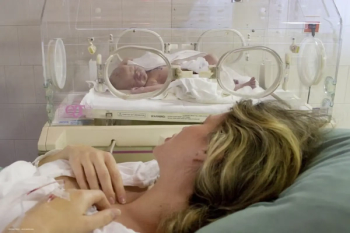
Cell loss issues with toric iris-fixated phakic IOLs
The annual cumulative cell loss in eyes implanted with toric iris-fixated phakic intraocular lenses (IOLs) is two to three times greater than in normal eyes without surgery, according to the results of a study published in the February issue of the Journal of Refractive Surgery.
Cell loss issues with toric iris-fixated phakic IOLs
The annual cumulative cell loss in eyes implanted with toric iris-fixated phakic intraocular lenses (IOLs) is two to three times greater than in normal eyes without surgery, according to the results of a study published in the February issue of the Journal of Refractive Surgery.
Mana Tehrani, MD from the Johannes Gutenburg-University, Mainz and Burkhard Dick, MD from the Center for Vision Science, Ruhr University Eye Hospital, Bochum, Germany conducted a prospective, randomized, self-controlled clinical trial of 40 eyes (28 myopic, 12 hyperopic) of 23 patients with high ametropia and astigmatism. Non-contact computer-assisted endothelial microscopy was performed before implantation and one, two and three years after.
The authors concluded that such a high cell loss means that an endothelial cell count analysis should be performed annually in order to detect potential progressive cell loss at an early stage.
What's the best way to detect glaucoma?
Nicolaas Reus, Maartje de Graaf and Hans Lemij from the Rotterdam Eye Hospital, The Netherlands, enrolled 40 healthy subjects, 48 patients with glaucoma and six patients with ocular hypertension. Measurements were taken of one eye from each subject using SLP-VCC and CSLO. Simultaneous stereoscopic ONH photographs were also obtained. Sixteen photographs of healthy and glaucomatous eyes were duplicated for assessing intra-observer agreement. For SLP-VCC, the nerve fibre indicator (NFI) was evaluated and for CSLO the Moorfields regression analysis (MRA) and the Bathija linear discriminant function (LDF) were used. Four glaucoma specialists, four general ophthalmologists, four ophthalmic residents and four optometrists classified the ONH photographs as either normal or glaucomatous.
The researchers found that SLP-VCC had the highest diagnostic accuracy, with a sensitivity, specificity and overall correct classification of 91.7%, 95% and 93.2%, respectively. CSLO, expressed as Bathija LDF and MRA, had a diagnostic accuracy comparable to glaucoma specialists and general ophthalmologists with an overall accuracy of 89.8%, 86.4%, 86.7% and 85.2% respectively. Residents classified the fewest eyes correctly.
Intra-observer agreement for classifying the ONH photographs ranged between 0.48 (within residents) and 0.78 (within glaucoma specialists). The agreement between observers and CSLO MRA (0.68) was statistically significantly higher (p<0.001) than between observers and SLP-VCC NFI (0.60) and CSLO Bathija LDF (0.62).
The authors agree that use of these imaging techniques may help clinicians in diagnosing glaucoma.
Newsletter
Get the essential updates shaping the future of pharma manufacturing and compliance—subscribe today to Pharmaceutical Technology and never miss a breakthrough.













































